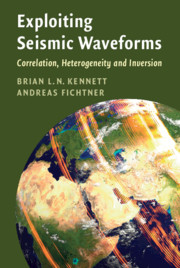Book contents
- Frontmatter
- Dedication
- Contents
- Preface
- 1 Introduction
- Part I Building the Seismic Wavefield
- Part II Correlation Wavefields
- Part III Interaction of Seismic Waves with Heterogeneity
- Part IV Inversion for Earth Structure
- 14 Inference for Structure
- 15 Gradient Methods for Nonlinear Inversion
- 16 Adjoint Methods and Sensitivity Analysis
- 17 Waveform Inversion of Event Data
- 18 Waveform Inversion of Correlation Data
- 19 New Directions
- Appendix Table of Notation
- Bibliography
- Index
16 - Adjoint Methods and Sensitivity Analysis
from Part IV - Inversion for Earth Structure
Published online by Cambridge University Press: 16 November 2020
- Frontmatter
- Dedication
- Contents
- Preface
- 1 Introduction
- Part I Building the Seismic Wavefield
- Part II Correlation Wavefields
- Part III Interaction of Seismic Waves with Heterogeneity
- Part IV Inversion for Earth Structure
- 14 Inference for Structure
- 15 Gradient Methods for Nonlinear Inversion
- 16 Adjoint Methods and Sensitivity Analysis
- 17 Waveform Inversion of Event Data
- 18 Waveform Inversion of Correlation Data
- 19 New Directions
- Appendix Table of Notation
- Bibliography
- Index
Summary
Descent methods of optimisation depend on calculating the derivatives of the composite function with respect to the large number of model parameters. Adjoint techniques allow the computation of derivatives in such complex models, with much less calculation than direct methods, and so enable practical non-linear inversion.Adjoint methods also allow effective computation of sensitivity kernels associated with the variation of critical parameters for both structure and sources. Sensitivity kernels can provide insight into the nature of Earth structure and the potential resolution of seismic tomography.
- Type
- Chapter
- Information
- Exploiting Seismic WaveformsCorrelation, Heterogeneity and Inversion, pp. 378 - 397Publisher: Cambridge University PressPrint publication year: 2020

